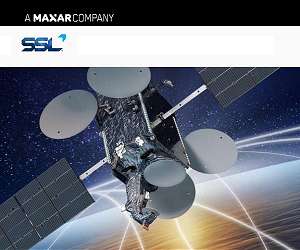Kleos Space satellites move into Integration Phase after Critical
Kleos Space S.A. reports that the company’s first cluster of satellites has entered the Integration Phase after successfully undergoing Critical Design Review (CDR) with Gomspace A/S. The CDR ensured the satellites could proceed towards assembly, validation, integration and testing and confirms they meet stated performance cost, schedule, and risk requirements.
The satellites are being built by nanosatellite specialist GomSpace A/S, a subsidiary of GomSpace AB, a European-based Nasdaq-listed global aerospace construction partner. The
Kleos Scouting Mission satellites will be launched by RocketLab on an Electron rocket from Launch Complex- 1 in New Zealand in Q2 2019. The satellites will be integrated into Rocket Lab’s in-house designed and built Maxwell dispensers and deployed from the Electron kick stage to Low Earth Orbit.
The Kleos Scouting Mission satellites will operate at low orbit enabling the company’s commercialisation of its ‘Data as a Service’ (DaaS) product this year. The first Kleos Space satellite cluster, known as Kleos Scouting Mission (KSM), will perform technology demonstrations that will be the keystone for a later global high capacity constellation.
Andy Bowyer, CEO of Kleos Space says: “We are impressed by the expertise of GomSpace. Completing the CDR marks an important milestone towards the upcoming launch of our first satellite constellation on schedule. It is the significant next step for Kleos to reach revenue stage with these initial satellites this year enabling governments and organisations to detect activity such as drug and people smuggling, illegal fishing and piracy, and identify those needing search and rescue at sea.”
Niels Buus, CEO of GomSpace says: “This is a very exciting milestone to achieve in this project. The GomSpace-Kleos team has done a superb job to come this far and we are now fully engaged into the next phase to deliver an on-time successful mission into space.”
The CDR milestone validates all technical components such as schedule, design, altitude control performance and system budget meet appropriate quality and design standards and can move to integration and phase – which will start immediately. It is planned that the satellite operations for the mission will be carried out in Luxembourg.
The Kleos satellites will globally gather geolocated radio transmission data that will be provided to users as Intelligence as a service to guard borders, protect assets and save lives.
The intelligence product will be sold for search and rescue, maritime security and regulatory intelligence purposes to users for whom quality geospatial intelligence and situational awareness is essential. The Scouting mission will deliver a daily service with a full constellation delivering near-real-time global observation.
Related Links
Kleos Space
Microsat News and Nanosat News at SpaceMart.com
|
We need your help. The SpaceDaily news network continues to grow but revenues have never been harder to maintain. With the rise of Ad Blockers, and Facebook – our traditional revenue sources via quality network advertising continues to decline. And unlike so many other news sites, we don’t have a paywall – with those annoying usernames and passwords. Our news coverage takes time and effort to publish 365 days a year. If you find our news sites informative and useful then please consider becoming a regular supporter or for now make a one off contribution. |
||
|
SpaceDaily Contributor $5 Billed Once credit card or paypal |
SpaceDaily Monthly Supporter $5 Billed Monthly paypal only |
|

![]()
Maxar’s SSL selected to define small satellite requirements for Environmental Defense Fund
Palo Alto CA (SPX) Jan 15, 2019
SSL, a Maxar Technologies company, and a leading provider of innovative satellites and spacecraft systems, announced today that it is leveraging Maxar’s combined capabilities for a contract to define requirements for a small form-factor satellite that will monitor and measure methane emissions from oil and gas facilities around the world.
The satellite, named MethaneSAT, will enable Environmental Defense Fund (EDF) to change the way we detect and analyze methane emissions and understand and combat … read more
